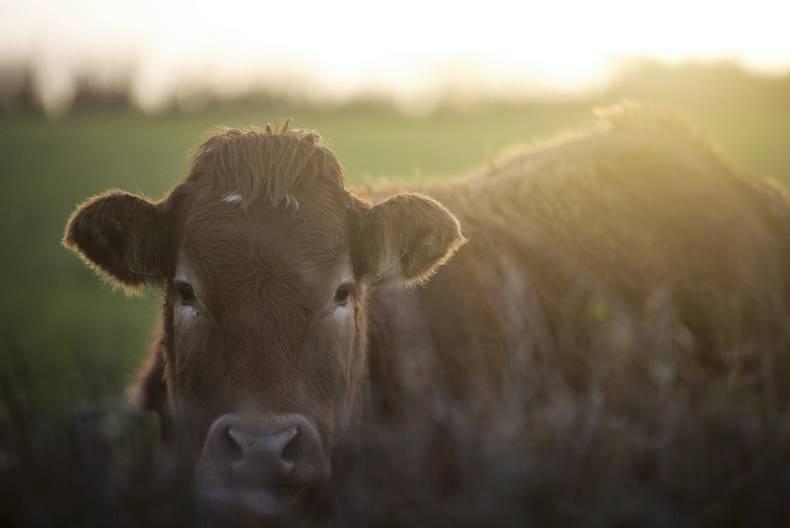There are a couple of specific features that should be noted in relation to China.
Like Japan, it will be a market for under 30 month beef and initially at least will also be a market for boneless beef, neither bone in beef which is equally preferred by Chinese customers, nor offals, will be approved. Once access is secured for boneless, getting approval for bone-in beef approval has to be the next priority to get full value from the market. Getting offal approval will be longer term target.
The Irish Farmers Journal spoke with Mark Goodman, Commercial Director (International) with ABP who has focused on China over the past five years.
Goodman accepts that while a potentially lucrative market, China will not be without its difficulties. However, he believes that Ireland simply cannot afford to not be involved in the Chinese market.
“I believe that Ireland, as the largest net exporter of beef in the Northern Hemisphere, must make sure we become an integral part of China’s beef import strategy for the future,” Goodman said.
Goodman spent a period of time in the China in 2010 and was sufficiently convinced of the opportunity to install a company representative in the Bord Bia hub to investigate the market further and build relationships.
The period since has further convinced ABP that China will be the single most important new market for beef, with the potential to challenge mainland European markets such as France or Italy in terms of volume with 25,000t a realistic initial target.
An interesting feature of the Chinese market is its segmentation, which can loosely be classified in three tiers namely a premium range, an intermediate range and a value manufacturing range.
When approved Irish beef will go into the segment currently occupied by New Zealand, Australia and Uruguay. Taste wise there is actually a preference of grain fed beef that comes from Australian feedlots but there is no reason why Ireland cannot be the next preferred supplier at the top end of the market.
A further attraction of the Chinese market is that it complements the UK and EU business for steak meat and roasts as their demand is primarily for forequarter cuts and flanks which contributes to achieving carcase balance. Beef is sold mainly in for out of home eating in the food service restaurant sector. These are the higher end domestic local, Hot-Pot and BBQ style restaurants while will be the target outlet for Irish beef, at least initially. There are also the global brand fast food restaurants such as QSR Chains, McDonalds, KFC etc.
This segment will not be easy for Ireland to crack, as this is where we will come up against price competition from cheap Brazilian, Uruguayan and New Zealand grinding beef.While less important there are large retailers such as Walmart, Auchan, Carrefour and Tesco in China but these will be a long term target.
What is needed to succeed in China?
There is no single silver bullet that will capture the Chinese market. Most importantly it has to be approached by a long courtship which Ireland is currently doing. Like anywhere we will have to be price competitive and we need a proactive market access team involving everyone from the Minister, Department officials, Diplomatic staff, the Irish meat processing industry and farmer representatives to explain the story of Irish beef, supplemented by an intensive Bord Bia marketing campaign. When Ireland gets approval it is likely that the import tariff will be 12%, the same as Brazil and Uruguay. This in itself puts us at a disadvantage compared with New Zealand who have a free trade agreement with China and Australia who signed a Free Trade deal in 2014 which puts them on a reducing rate, reaching zero after nine years. It would be desirable if Ireland’s tariff could be reduced or removed through negotiation as New Zealand and Australia have achieved.
It is clear that China presents a real volume market opportunity which will be essential to handle the extra beef coming into the system later this year and from 2017 on. There are genuine market opportunities and we could expect faster development than has been the case in the USA. Work to secure approval is still required with the AQSIQ inspectors due in Ireland in coming days. This is Government to Government and the factory inspections by the Certification and Accreditation Administration of the People's Republic of China (CNCA) will follow, leaving the agreement of certificate and protocols then required to complete the process.
Hype
Much political hype surrounded the announcement by China that it was lifting the BSE ban last February. That left the impression that we would be doing business quickly but in reality that was just one part of a longer process. Suggestions are that in a best case scenario of the end of this year or early next year with plenty of potential for further delay. With extra beef coming onto the market in the second half of 2016, for Irish farmers it cannot come quick enough. It is clearly a priority market for ABP and we can expect the same for the rest of the Irish industry.
There are a couple of specific features that should be noted in relation to China.
Like Japan, it will be a market for under 30 month beef and initially at least will also be a market for boneless beef, neither bone in beef which is equally preferred by Chinese customers, nor offals, will be approved. Once access is secured for boneless, getting approval for bone-in beef approval has to be the next priority to get full value from the market. Getting offal approval will be longer term target.
The Irish Farmers Journal spoke with Mark Goodman, Commercial Director (International) with ABP who has focused on China over the past five years.
Goodman accepts that while a potentially lucrative market, China will not be without its difficulties. However, he believes that Ireland simply cannot afford to not be involved in the Chinese market.
“I believe that Ireland, as the largest net exporter of beef in the Northern Hemisphere, must make sure we become an integral part of China’s beef import strategy for the future,” Goodman said.
Goodman spent a period of time in the China in 2010 and was sufficiently convinced of the opportunity to install a company representative in the Bord Bia hub to investigate the market further and build relationships.
The period since has further convinced ABP that China will be the single most important new market for beef, with the potential to challenge mainland European markets such as France or Italy in terms of volume with 25,000t a realistic initial target.
An interesting feature of the Chinese market is its segmentation, which can loosely be classified in three tiers namely a premium range, an intermediate range and a value manufacturing range.
When approved Irish beef will go into the segment currently occupied by New Zealand, Australia and Uruguay. Taste wise there is actually a preference of grain fed beef that comes from Australian feedlots but there is no reason why Ireland cannot be the next preferred supplier at the top end of the market.
A further attraction of the Chinese market is that it complements the UK and EU business for steak meat and roasts as their demand is primarily for forequarter cuts and flanks which contributes to achieving carcase balance. Beef is sold mainly in for out of home eating in the food service restaurant sector. These are the higher end domestic local, Hot-Pot and BBQ style restaurants while will be the target outlet for Irish beef, at least initially. There are also the global brand fast food restaurants such as QSR Chains, McDonalds, KFC etc.
This segment will not be easy for Ireland to crack, as this is where we will come up against price competition from cheap Brazilian, Uruguayan and New Zealand grinding beef.While less important there are large retailers such as Walmart, Auchan, Carrefour and Tesco in China but these will be a long term target.
What is needed to succeed in China?
There is no single silver bullet that will capture the Chinese market. Most importantly it has to be approached by a long courtship which Ireland is currently doing. Like anywhere we will have to be price competitive and we need a proactive market access team involving everyone from the Minister, Department officials, Diplomatic staff, the Irish meat processing industry and farmer representatives to explain the story of Irish beef, supplemented by an intensive Bord Bia marketing campaign. When Ireland gets approval it is likely that the import tariff will be 12%, the same as Brazil and Uruguay. This in itself puts us at a disadvantage compared with New Zealand who have a free trade agreement with China and Australia who signed a Free Trade deal in 2014 which puts them on a reducing rate, reaching zero after nine years. It would be desirable if Ireland’s tariff could be reduced or removed through negotiation as New Zealand and Australia have achieved.
It is clear that China presents a real volume market opportunity which will be essential to handle the extra beef coming into the system later this year and from 2017 on. There are genuine market opportunities and we could expect faster development than has been the case in the USA. Work to secure approval is still required with the AQSIQ inspectors due in Ireland in coming days. This is Government to Government and the factory inspections by the Certification and Accreditation Administration of the People's Republic of China (CNCA) will follow, leaving the agreement of certificate and protocols then required to complete the process.
Hype
Much political hype surrounded the announcement by China that it was lifting the BSE ban last February. That left the impression that we would be doing business quickly but in reality that was just one part of a longer process. Suggestions are that in a best case scenario of the end of this year or early next year with plenty of potential for further delay. With extra beef coming onto the market in the second half of 2016, for Irish farmers it cannot come quick enough. It is clearly a priority market for ABP and we can expect the same for the rest of the Irish industry.






 This is a subscriber-only article
This is a subscriber-only article










SHARING OPTIONS: